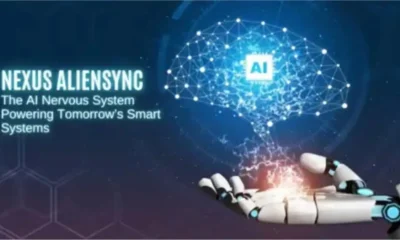GENERAL
Samsara Island: Does This Hidden Paradise from Crazy Rich Asians Really Exist?

Samsara Island. A name that sparks curiosity. A paradise so luxurious, it seems unreal. And maybe it is. Featured in Crazy Rich Asians, this island became an instant obsession. Crystal-clear waters, lavish villas, and pure exclusivity—it had it all. But here’s the twist. This Island doesn’t exist. Not really. Fans searched for it. Travelers dreamed of visiting. But this exotic escape was a cinematic illusion. So, where was it filmed? What inspired it? And can you visit a place like it? Let’s dive in. Because while Samsara Island may be fiction, its beauty is very real. And yes, you can experience something just as breathtaking.
What Is Samsara Island?
Samsara Island. A name as mysterious as the place itself. In Crazy Rich Asians, it was the ultimate playground for the ultra-rich. Think private beaches, extravagant yachts, and the kind of luxury most can only dream of. But what does “Samsara” even mean? In Hindu and Buddhist traditions, samsara refers to the cycle of life, death, and rebirth. Deep, right? In the movie, the island represents transformation—a place where characters face truth, indulge in excess, and redefine themselves. A dreamlike setting with a deeper meaning. But here’s the catch. This Island was never on the map.
Does Samsara Island Really Exist?
Is this Island real? Fans wondered that. The answer? No. The island is entirely fictional, created for the film’s over-the-top plot. But it seemed so real, didn’t it? That’s Hollywood magic. The filmmakers needed an isolated paradise, something out of a billionaire’s dreams. Rather than filming on a real island, they pieced together various locations, creating the illusion of this Island. Clever move. It added to the exclusivity, making it even more intriguing. But if you’re still hoping to visit, don’t worry. There’s a place just like it. Keep reading.
The Real-Life Inspiration Behind Samsara Island
Though Samsara Island does not exist, its loveliness does. The stunning vistas? Shot at the Four Seasons Resort in Langkawi, Malaysia. A secret paradise with untamed beaches, limestone shores, and five-star amenities. No wonder movie makers picked this location. The resort features villas that are private, pools that are infinity, and a sense of grandeur deserving of the movie’s high-end characters. But Langkawi was not the only place used. A few scenes were shot in Thailand, lending the island itself an exotic flair. The end result? A paradise that appears to exist but doesn’t. Nevertheless, you can travel to where it actually is. And they’re just as beautiful.
Langkawi: The True Samsara Island?
Langkawi. It’s not Samsara Island, but it’s the next best thing. A Malaysian tropical paradise of turquoise seas, dense rainforests, and high-end resorts. It’s where most of Samsara Island’s action was shot. And it’s a dream vacation in itself. Waking up to the sound of waves, walking onto a private beach, and sipping cocktails under swaying palms. That’s Langkawi. The Four Seasons Resort, where Crazy Rich Asians filmed, offers the same elite experience. Want to feel like a billionaire for a weekend? This is your place. Samsara Island may be fake, but Langkawi? 100% real.
Other Islands Similar to Samsara Island
Samsara Island is probably a myth, but there are lots of places that are like it. The Maldives, for example, with its water villas and glassy seas. Bora Bora, where high-end living merges with the outdoors. Seychelles, an Eden of pristine loveliness. And then there are Thailand’s island hideaways, with the luxury you imagined in the film. They provide five-star hotels, private service, and views that leave you awestruck. They’re surreal, just like Samsara Island. What’s the difference? You can actually go to. Whether you want total seclusion or a wild getaway, there’s an island out there waiting for you. And it’s every bit as enchanted.

The Meaning Behind the Name “Samsara”
Why Samsara? It’s not a cute name. It has its origins in ancient philosophy. In Hindu and Buddhist traditions, samsara is the cycle of birth, death, and rebirth. A journey without end. A rich, nearly spiritual idea. So why apply it to a fictional island? Perhaps it represents change. In the movie, people transform, evolve, and confront truths they have been unwilling to face. Samsara Island is not all luxury. It’s about self-discovery. A deeper significance veiled in beauty. Coincidence? Most likely not. It gives the movie an additional clandestine layer of storytelling. One that makes the island all the more intriguing.
How Hollywood Uses Fictional Islands in Movies
Hollywood loves fictional islands. Why? Because reality has limits. Fiction doesn’t. From Isla Nublar in Jurassic Park to Skull Island in King Kong, made-up locations create mystery, adventure, and exclusivity. This Island fits the same mold. It was designed to be unattainable, adding to its appeal. Real islands have history, rules, and tourism. Fictional ones? They’re pure fantasy, untouched and perfect. Filmmakers use them to transport audiences somewhere magical. Somewhere that feels real—but isn’t. It’s smart. It keeps the mystery alive. Because once a place is real, it loses some of its magic.
Can You Visit Samsara Island?
Short answer? No. But you can visit the next best thing. The Four Seasons Resort in Langkawi is where most scenes were filmed. It’s as close as you’ll get to Samsara Island. Private beaches? Check. Luxury villas? Check. A paradise-like setting? Absolutely. Want something more exclusive? The Maldives, Bora Bora, and Thailand’s private islands offer similar vibes. While Samsara Island may be fiction, places like it exist. And they’re just a flight away.
The Role of Samsara Island in Crazy Rich Asians
Samsara Island wasn’t just a backdrop. It was a statement. A symbol of excess, exclusivity, and luxury. It’s where Astrid discovers Michael’s betrayal. Where Araminta’s extravagant bachelorette party unfolds. A place that only the elite can access. It represented the gap between the rich and the ultra-rich. The kind of wealth that buys entire islands for a weekend. Samsara Island wasn’t just about beauty. It was about power. It played a subtle but crucial role in the story. And for many viewers, it became unforgettable.
How Crazy Rich Asians Boosted Tourism to Langkawi
Movies have power. They influence travel trends. Crazy Rich Asians did exactly that. After the film’s release, interest in Langkawi skyrocketed. Tourists wanted to see Samsara Island—only to learn it wasn’t real. But that didn’t stop them. They flocked to Langkawi, searching for the stunning beaches and luxury resorts seen in the film. Hotels saw an increase in bookings. Local tourism thrived. Film tourism is real, and Crazy Rich Asians proved it. Even though Samsara Island was fiction, its impact on travel? Very real.
Final Thoughts: The Allure of Samsara Island
Samsara Island doesn’t exist. But its beauty, its luxury, its exclusivity? That’s real. That’s why people still search for it. It represents an escape, a dream, a world beyond reach. And while you can’t visit Samsara Island, you can experience places just like it. Langkawi. The Maldives. Bora Bora. Seychelles. The fantasy of Samsara lives on in these real-world paradises. So maybe it’s not about finding Samsara Island. Maybe it’s about discovering your own perfect escape. And that? That’s completely possible.
-

 BIOGRAPHY7 months ago
BIOGRAPHY7 months agoBehind the Scenes with Sandra Orlow: An Exclusive Interview
-

 HOME1 year ago
HOME1 year agoDiscovering Insights: A Deep Dive into the //vital-mag.net blog
-

 HOME1 year ago
HOME1 year agoSifangds in Action: Real-Life Applications and Success Stories
-

 BIOGRAPHY1 year ago
BIOGRAPHY1 year agoThe Woman Behind the Comedian: Meet Andrew Santino Wife




























